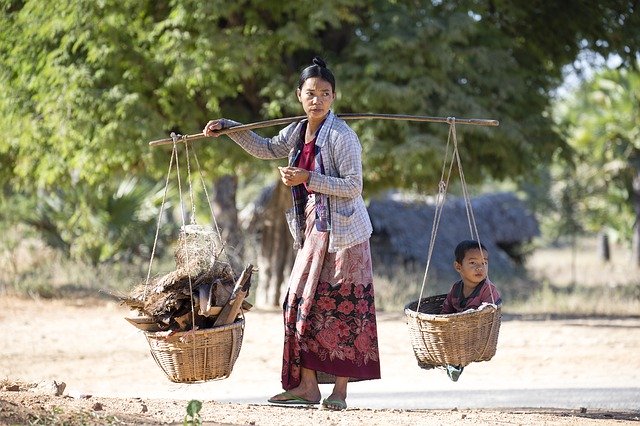When you think of One Human-Animal Health, are you a connector or a compartmentalizer? Ask people what One Human-Animal Health means and you’ll probably get as many answers as the number of people you ask. But this doesn’t mean that nobody knows the answer. More correctly,they all do know the answer, albeit from their own perspective. But rather than the result being chaos just waiting for some higher power to impose a fixed definition of One Health upon everyone, these answers tend to fall into one of two broad categories. And those, in turn, reflect one’s world view.
For convenience, I’ll call them the connectors and the compartmentalizers. Connectors are more interested in all the different connections that comprise what we call the natural world. Compartmentalizers, on the other hand, like to break down the natural world—including the health of those in it—into its component parts. Of the two, the connector orientation is the more ancient one.
Early humans surely recognized the physical, behavioral, bond, and environmental connections between human and animal health from the time  humans and animals started interacting with each other in any way. It’s even more likely that evolving humans gained this perspective from their primate ancestors and the other animals around them. Doing so was essential for the survival for humans and animals alike. Ancient hunters needed this information to locate prey that they not only could hunt safely, but eat safely too. Gatherers needed it to ensure their health and safety as they collected and later grew food to survive.
humans and animals started interacting with each other in any way. It’s even more likely that evolving humans gained this perspective from their primate ancestors and the other animals around them. Doing so was essential for the survival for humans and animals alike. Ancient hunters needed this information to locate prey that they not only could hunt safely, but eat safely too. Gatherers needed it to ensure their health and safety as they collected and later grew food to survive.
But as people became more removed from nature and more dependent on technology, their recognition and appreciation of the role connections played in the health of all living beings and the planet itself gave way to a more compartmentalized view. Thus and despite all the evidence that supported the inherent existence and value of a myriad of One Health affirming-connections, the current view often represents the more compartmentalized one favored by academic and other formal organizations.
Initially I despaired that One Health would fall prey to the kind of problem-oriented thinking that eliminates messy—but often important and connected—variables and replaces them with scientifically reproducible results. But I later realized that this had more to do with my reading material than reality. Because of my background, I tend to read a lot of articles from scientific journals. When I do, I immediately revert to student mode. I’m focused. I’m in my office. I expect the writing to be dry, impersonal, and employing a vocabulary designed more to impress the author’s colleagues than enlighten readers from different backgrounds. When I read for enjoyment, I’m more relaxed, usually in bed with a cat snoozing on my chest and two dogs sleeping at the foot of the bed.
But periodically those two different orientations serendipitously intersect. Several weeks ago, I read a press release from the Smithsonian Institution entitled “New Virus Discovered in Myanmar by Smithsonian’s Global Health Program”.
The release announced the discovery of a new corona virus in Myanmar bat species, and a second virus known to infect bats in Thailand but not previously reported in Myanmar The wildlife veterinarian who collected the samples, Marc Valittutto, was briefly mentioned and quoted. However, the bulk of the release focused on the many organizations involved in the process of converting those samples to usable data in facilities worldwide. Lots of different compartments solving lots of problems related to those samples. That part was a real brain-squeezer for me, a must-read for my office, not in my bed with a sleeping cat on top of me.
Shortly after I read that article, a link in a veterinary newsletter took me to a Washington Post article entitled “A Smithsonian team discovered a new coronavirus. The story behind that effort shows what it takes to get ahead of potential pandemics”.
The title suggested an equally formal approach to the same story addressed in the Smithsonian press release. But its opening sentence—  “Before Marc Valitutto could begin hunting for a deadly virus, he had to find a snake hook for a monk.”—told me this was going to be a different kind of One Health article. One about the kind of ground zero One Health environment riddled with complex connections that humans needed to master to survive eons ago.
“Before Marc Valitutto could begin hunting for a deadly virus, he had to find a snake hook for a monk.”—told me this was going to be a different kind of One Health article. One about the kind of ground zero One Health environment riddled with complex connections that humans needed to master to survive eons ago.
It begins with the awareness that, regardless of all the education you’ve received about the nature of a problem, your part in resolving it, how to accomplish that, and where to go for help if you have questions, there inevitably comes a time when you must face all the messy human, animal, physical, behavioral, bond, and environmental variables unique to that specific situation right here and right now. For Marc Valitutto, it unfolds like a One Health version of the old English nursery rhyme, “This is the House that Jack Built.”
Valitutto’s First World duty was to fulfill the stringent collection criteria imposed by the scientists who would prepare his samples and study them. The ideal samples were those that revealed possible animal pathogens that could cause disease in humans. (Think of potential nasties like Ebola, Zika, and some corona viruses.) But in order to provide such samples, the wildlife veterinarian first needed to fulfill the equally stringent criteria imposed on him by the people living in the region where the sources of his samples lived.
Valitutto and the team he trained to help him represented multiple threats to the local population. Among them, how would the results of these tests affect them and their welfare? Myanmar is an ancient country struggling to recover from a long chaotic history. (This BBC time-line reveals just how long and chaotic its history has been.) As the people take tentative steps toward peace and recovery, naturally they’re worried about what effects the discovery of human and animal pathogens may have on their well-being.
This brings us back to the monk and the snake hook. Valitutto needed to gain the residents’ trust which, given everything they’d been through, wasn’t a given. Earning the trust of a monk held in high regard by locating the requested snake hook played a crucial role in that process. Without the monk’s trust, the probability of the wildlife veterinarian safely collecting samples of animal pathogens that could cause disease in humans worldwide plummeted for two very real reasons never discussed in his education. The cave that hosted those sample-secreting and -excreting bats was a sacred space to the local population. It also harbored poisonous snakes. In that One Health world, the ability to connect with a monk and a snake hook in a meaningful way meant the difference between success and failure. Had Valitutto lacked the wherewithal to make those connections, there would have been no samples for the compartmentalizers to analyze, and human and animal health worldwide would pay the price.

Thanks to pixabay.com for the lovely pictures of an ancient country.
When you think of One Human-Animal Health, are you a connector or a compartmentalizer? Ask people what One Human-Animal Health means and you’ll probably get as many answers as the number of people you ask. But this doesn’t mean that nobody knows the answer. More correctly,they all do know the answer, albeit from their own perspective. But rather than the result being chaos just waiting for some higher power to impose a fixed definition of One Health upon everyone, these answers tend to fall into one of two broad categories. And those, in turn, reflect one’s world view.
For convenience, I’ll call them the connectors and the compartmentalizers. Connectors are more interested in all the different connections that comprise what we call the natural world. Compartmentalizers, on the other hand, like to break down the natural world—including the health of those in it—into its component parts. Of the two, the connector orientation is the more ancient one.
Early humans surely recognized the physical, behavioral, bond, and environmental connections between human and animal health from the time humans and animals started interacting with each other in any way. It’s even more likely that evolving humans gained this perspective from their primate ancestors and the other animals around them. Doing so was essential for the survival for humans and animals alike. Ancient hunters needed this information to locate prey that they not only could hunt safely, but eat safely too. Gatherers needed it to ensure their health and safety as they collected and later grew food to survive.
humans and animals started interacting with each other in any way. It’s even more likely that evolving humans gained this perspective from their primate ancestors and the other animals around them. Doing so was essential for the survival for humans and animals alike. Ancient hunters needed this information to locate prey that they not only could hunt safely, but eat safely too. Gatherers needed it to ensure their health and safety as they collected and later grew food to survive.
But as people became more removed from nature and more dependent on technology, their recognition and appreciation of the role connections played in the health of all living beings and the planet itself gave way to a more compartmentalized view. Thus and despite all the evidence that supported the inherent existence and value of a myriad of One Health affirming-connections, the current view often represents the more compartmentalized one favored by academic and other formal organizations.
Initially I despaired that One Health would fall prey to the kind of problem-oriented thinking that eliminates messy—but often important and connected—variables and replaces them with scientifically reproducible results. But I later realized that this had more to do with my reading material than reality. Because of my background, I tend to read a lot of articles from scientific journals. When I do, I immediately revert to student mode. I’m focused. I’m in my office. I expect the writing to be dry, impersonal, and employing a vocabulary designed more to impress the author’s colleagues than enlighten readers from different backgrounds. When I read for enjoyment, I’m more relaxed, usually in bed with a cat snoozing on my chest and two dogs sleeping at the foot of the bed.
But periodically those two different orientations serendipitously intersect. Several weeks ago, I read a press release from the Smithsonian Institution entitled “New Virus Discovered in Myanmar by Smithsonian’s Global Health Program”.
The release announced the discovery of a new corona virus in Myanmar bat species, and a second virus known to infect bats in Thailand but not previously reported in Myanmar The wildlife veterinarian who collected the samples, Marc Valittutto, was briefly mentioned and quoted. However, the bulk of the release focused on the many organizations involved in the process of converting those samples to usable data in facilities worldwide. Lots of different compartments solving lots of problems related to those samples. That part was a real brain-squeezer for me, a must-read for my office, not in my bed with a sleeping cat on top of me.
Shortly after I read that article, a link in a veterinary newsletter took me to a Washington Post article entitled “A Smithsonian team discovered a new coronavirus. The story behind that effort shows what it takes to get ahead of potential pandemics”.
The title suggested an equally formal approach to the same story addressed in the Smithsonian press release. But its opening sentence— “Before Marc Valitutto could begin hunting for a deadly virus, he had to find a snake hook for a monk.”—told me this was going to be a different kind of One Health article. One about the kind of ground zero One Health environment riddled with complex connections that humans needed to master to survive eons ago.
“Before Marc Valitutto could begin hunting for a deadly virus, he had to find a snake hook for a monk.”—told me this was going to be a different kind of One Health article. One about the kind of ground zero One Health environment riddled with complex connections that humans needed to master to survive eons ago.
It begins with the awareness that, regardless of all the education you’ve received about the nature of a problem, your part in resolving it, how to accomplish that, and where to go for help if you have questions, there inevitably comes a time when you must face all the messy human, animal, physical, behavioral, bond, and environmental variables unique to that specific situation right here and right now. For Marc Valitutto, it unfolds like a One Health version of the old English nursery rhyme, “This is the House that Jack Built.”
Valitutto’s First World duty was to fulfill the stringent collection criteria imposed by the scientists who would prepare his samples and study them. The ideal samples were those that revealed possible animal pathogens that could cause disease in humans. (Think of potential nasties like Ebola, Zika, and some corona viruses.) But in order to provide such samples, the wildlife veterinarian first needed to fulfill the equally stringent criteria imposed on him by the people living in the region where the sources of his samples lived.
Valitutto and the team he trained to help him represented multiple threats to the local population. Among them, how would the results of these tests affect them and their welfare? Myanmar is an ancient country struggling to recover from a long chaotic history. (This BBC time-line reveals just how long and chaotic its history has been.) As the people take tentative steps toward peace and recovery, naturally they’re worried about what effects the discovery of human and animal pathogens may have on their well-being.
This brings us back to the monk and the snake hook. Valitutto needed to gain the residents’ trust which, given everything they’d been through, wasn’t a given. Earning the trust of a monk held in high regard by locating the requested snake hook played a crucial role in that process. Without the monk’s trust, the probability of the wildlife veterinarian safely collecting samples of animal pathogens that could cause disease in humans worldwide plummeted for two very real reasons never discussed in his education. The cave that hosted those sample-secreting and -excreting bats was a sacred space to the local population. It also harbored poisonous snakes. In that One Health world, the ability to connect with a monk and a snake hook in a meaningful way meant the difference between success and failure. Had Valitutto lacked the wherewithal to make those connections, there would have been no samples for the compartmentalizers to analyze, and human and animal health worldwide would pay the price.
Thanks to pixabay.com for the lovely pictures of an ancient country.